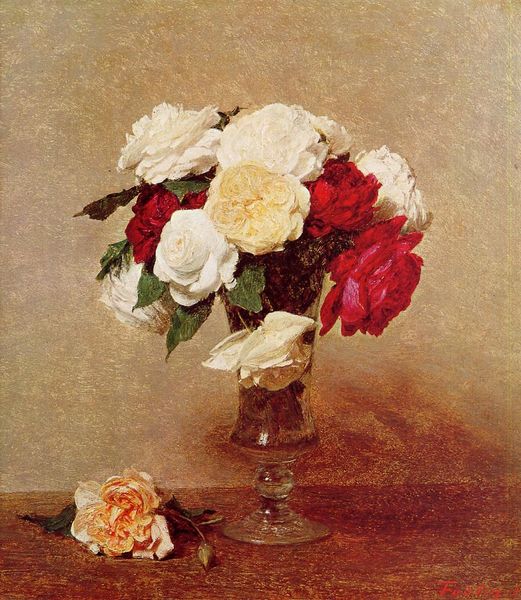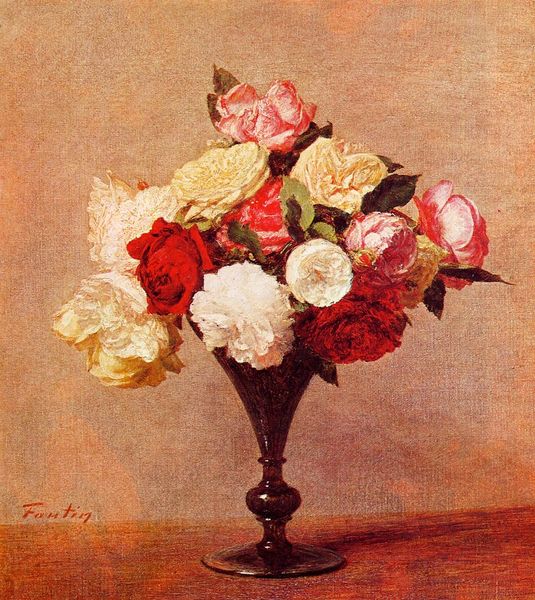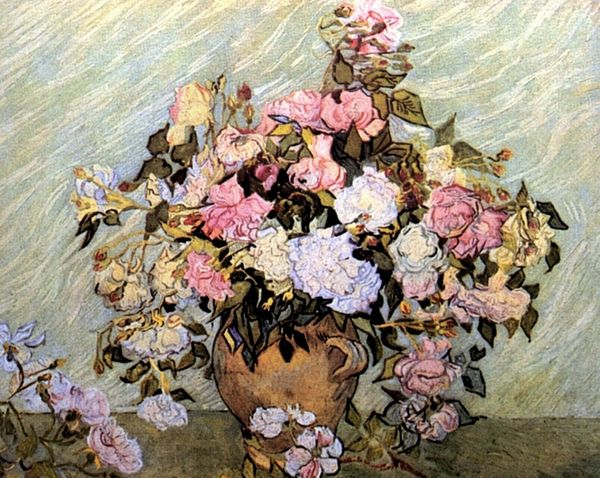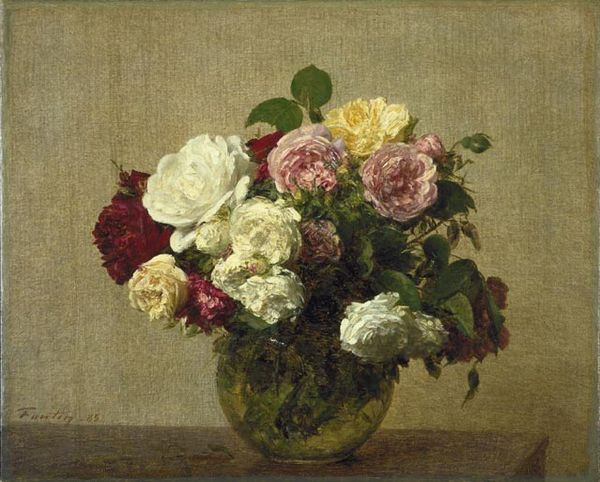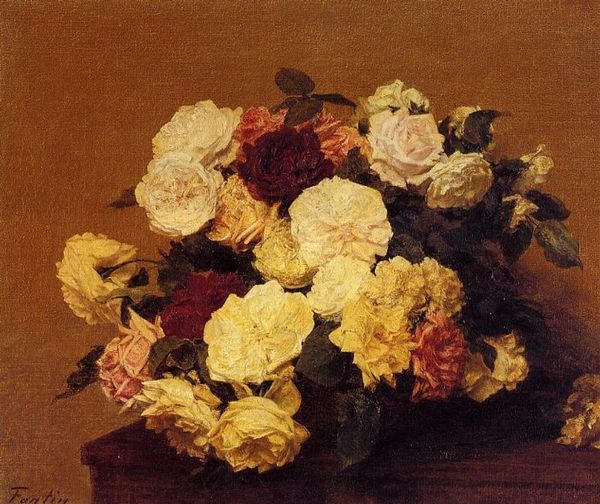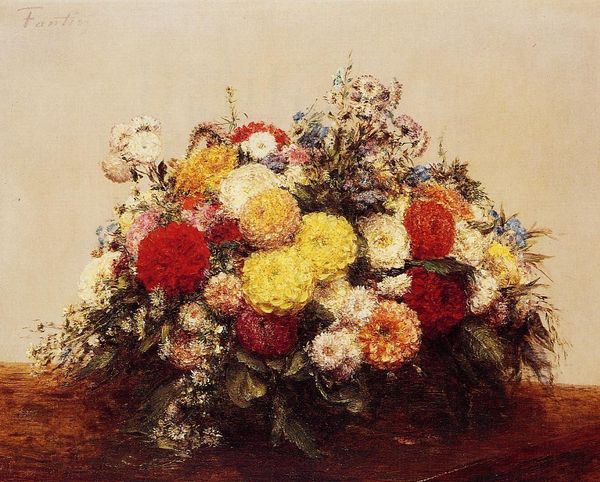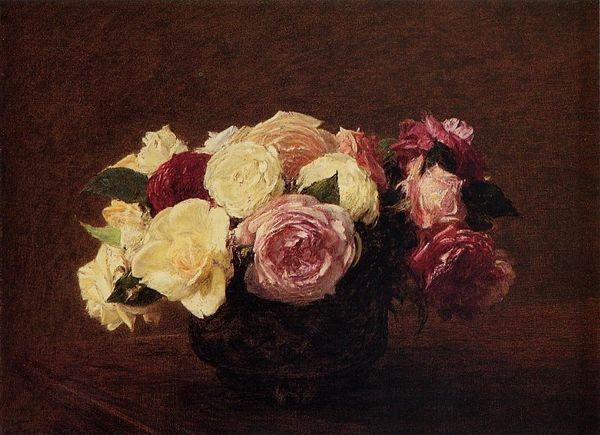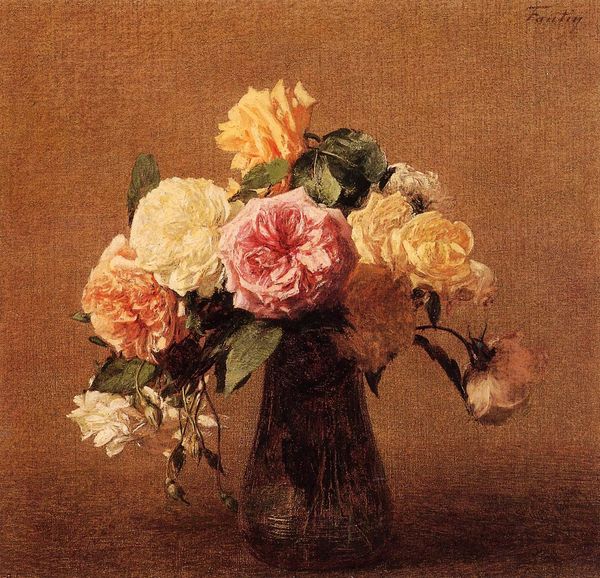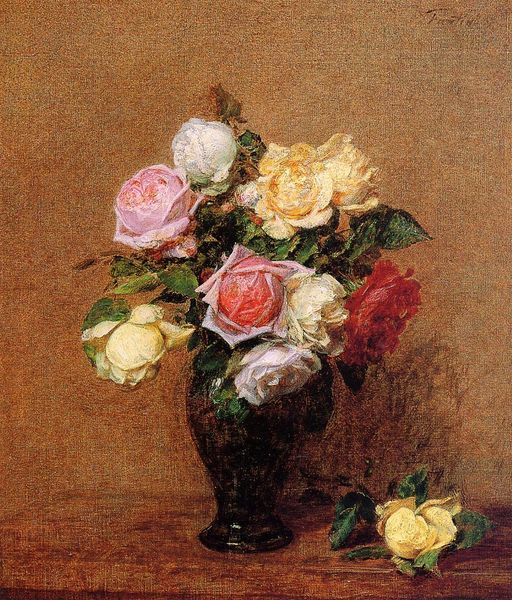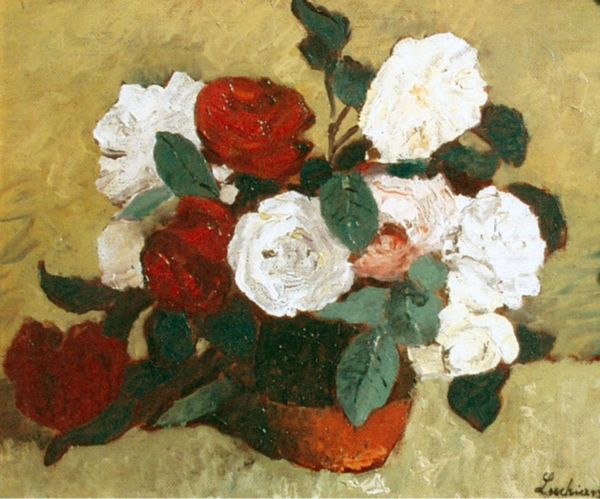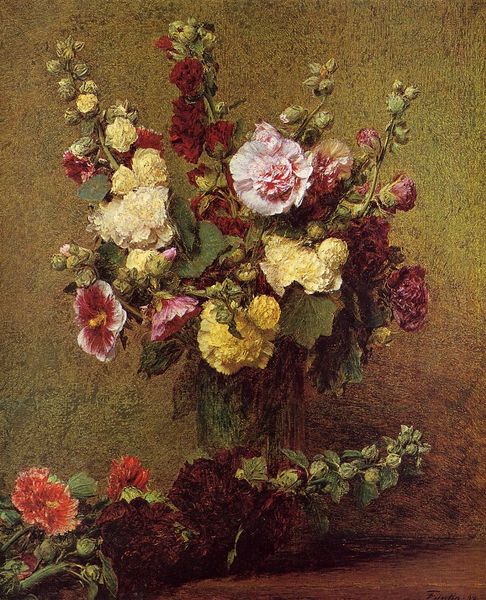
Copyright: Public domain
Curator: The painting before us is Henri Fantin-Latour's "Rose Trees White Roses," created in 1875. It’s an oil on canvas, showcasing his meticulous attention to detail in depicting floral arrangements. Editor: Immediately, I'm struck by its quiet elegance. There's a certain stillness, a contemplative mood. The limited palette, the creamy whites and soft greens, really emphasizes a delicate beauty. Curator: Fantin-Latour was deeply embedded in the Parisian art world, yet somewhat detached. He was a contemporary of the Impressionists but never fully embraced their fleeting, outdoor style. His still lifes, including this one, often served as a commercial endeavor, while also expressing personal appreciation. Editor: Absolutely, and I think this piece shows how gender played a part in his world, specifically through flowers, where ideas around bourgeois femininity, domesticity and decorum could be investigated and reinforced. Fantin-Latour presents nature in such an acceptable way. Curator: I agree. Considering the era, the public role of such works was often bound to concepts of taste and refinement. He exhibited regularly at the Salon, navigating the expectations of the bourgeoisie, and building connections between his art and economic stability. This is what his collectors were familiar with. Editor: Although it's considered realist, there's still a strong undercurrent of Romanticism, the artist’s emotive sensibility, so to speak. Looking closer at those petals, they aren't just representations of flowers. Fantin-Latour’s choice to frame white roses so closely implies a focus on the interiority, rather than a commentary on how gardening fit within social frameworks. Curator: Interesting, that moves away from his personal associations, but maybe a commentary on artistic associations? Roses held potent symbolism at the time – beauty, love, transience – and were widely admired, so would've been an astute artistic investment in Fantin-Latour’s career. Editor: Seeing those roses together, in this intimate presentation… they’re not shouting for attention, and are actually rather melancholic. The slight blurring around the edges adds to that sense of fragile beauty. The politics of that artistic career trajectory may indeed underscore why white roses have been deliberately depicted to stir such pensive qualities. Curator: Thinking about how Fantin-Latour made art between private life and a more social facing engagement gives us plenty of food for thought. It is a useful reflection into a career through this work. Editor: Yes, reflecting on the deeper symbolic undercurrents of something as seemingly innocuous as a bouquet allows us to examine the socio-political textures woven into artistic creations of the time.
Comments
No comments
Be the first to comment and join the conversation on the ultimate creative platform.
